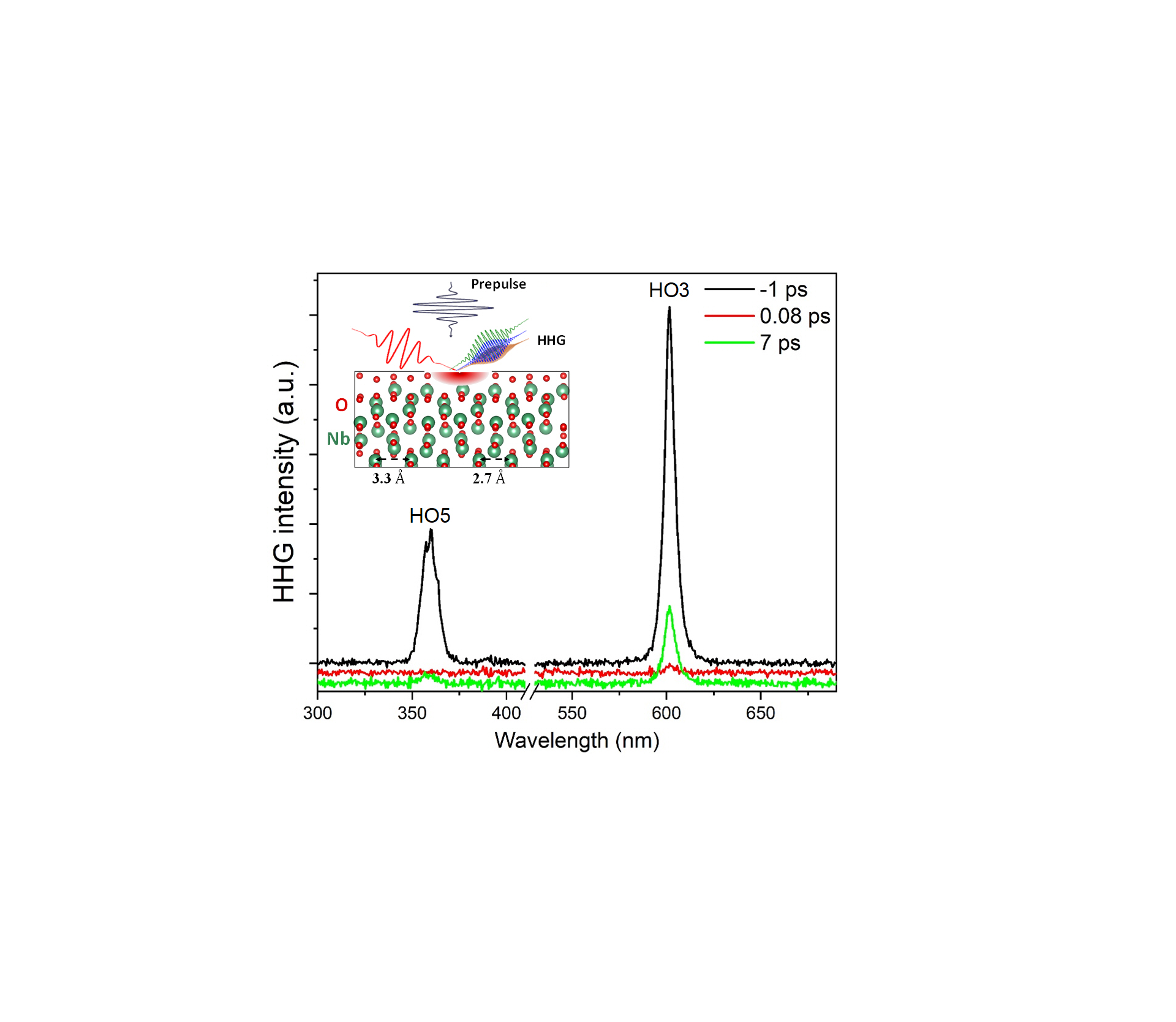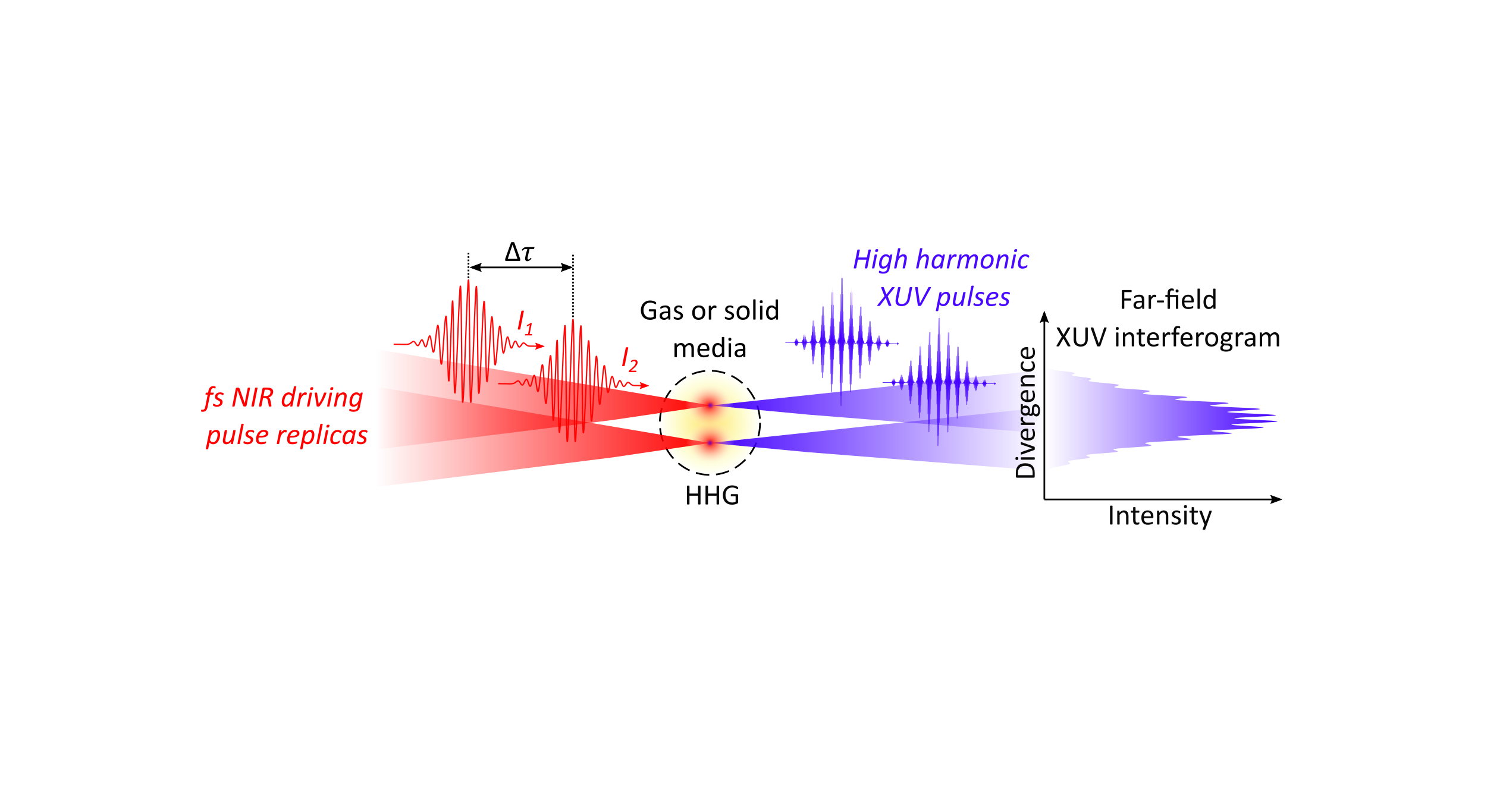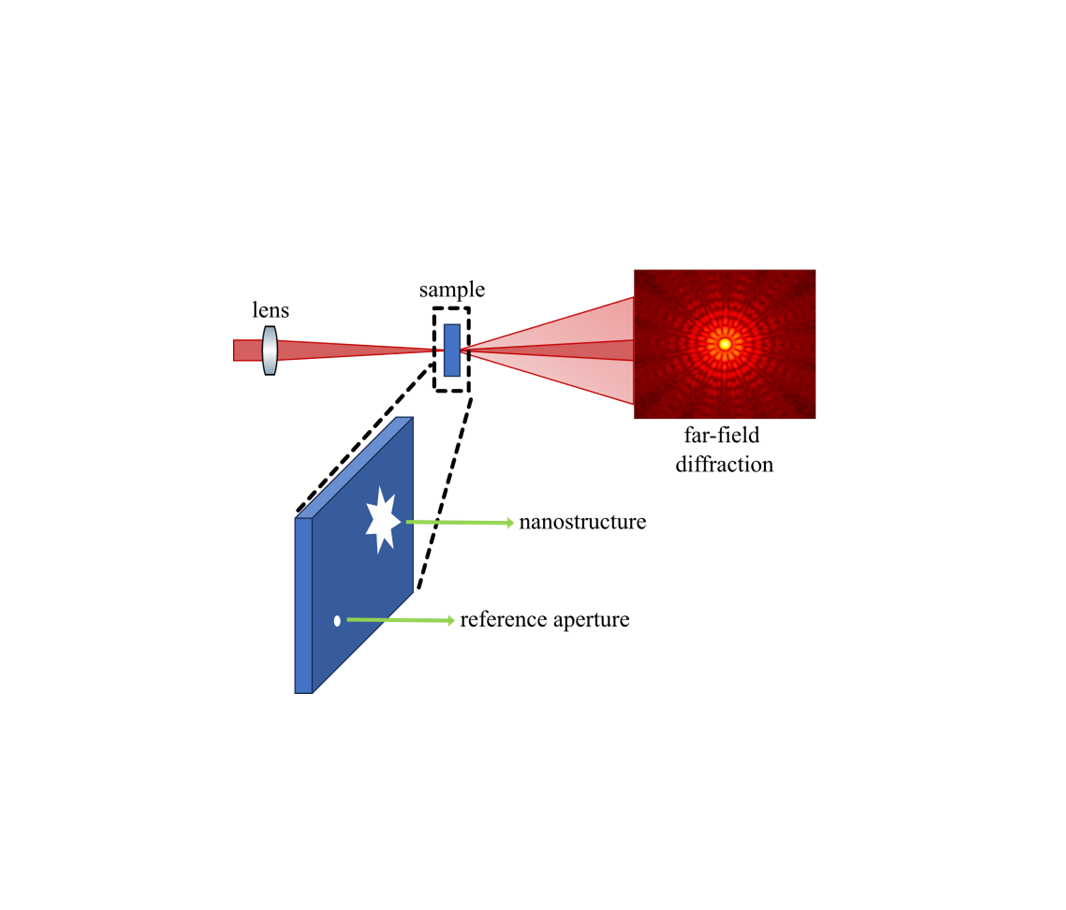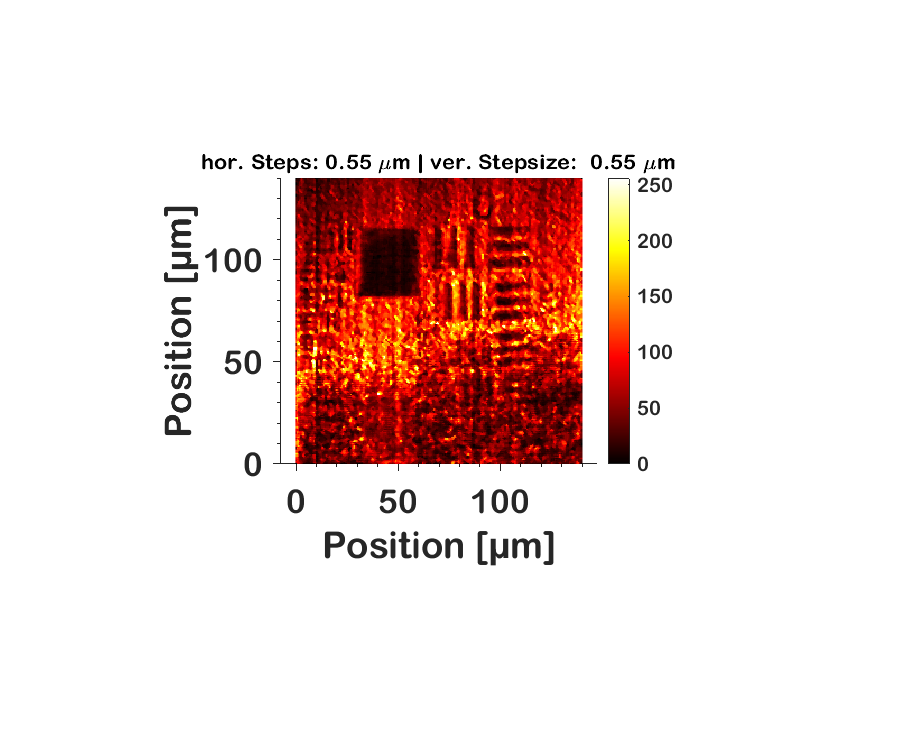
High-Harmonic Generation & EUV Science
Research Activities

Transient Solid-HHG
Optical control of exotic or hidden phases in strongly correlated systems has emerged as one of the core topics in condensed matter physics. Besides the fundamental interest in disentangling competing electron-electron and electron-lattice interactions, there is an equally attractive technological relevance for the realization of Mott memristors. Resolving those transitions and possible metastable phases temporally are key topics but challenge existing experimental approaches. Thus, our group utilizes HHG to explore these photo-induced phase transitions, benefiting from their higher sensitivity and temporal resolution to band structure and lattice deformations. Experimental and theoretical evidence extracted from high harmonic spectroscopy has been observed to confirm the insulator-metal transition. For further details please contact Dr. Zhonghui Nie.

Solid-HHG Sources and EUV Interferometry
Solid-HHG sources have emerged as a promising alternative to traditional gas-based sources, opening avenues towards novel coherent table-top EUV sources. Nevertheless, their conversion efficiencies still lag behind those of gas-HHG sources, limiting their widespread application. We are developing sculpted multi-color drivers that can enhance ionization rates and improve the conversion efficiency of solid-HHG sources by employing non-collinear wave mixing techniques. Furthermore, our goal is to utilize high-harmonic interferometry which reveals control of EUV emission in solids to attain higher temporal and spectral resolution in imaging, holography, and spectroscopy applications and to conduct comprehensive material-specific investigations. For more information please contact Dr. Nataliia Kuzkova.

Gas-HHG Sources Optimization
Widescale use of high-harmonic generation from gases is still hindered by low conversion efficiencies. Among several methods for optimizing conversion efficiency, multi-color waveforms have shown promising results. Using the principles of the ‘perfect wave’ laid out by Chipperfield et al. (Phys. Rev. Lett. 102.6, 2009), multiple frequencies can engineer the electric field to better fit requirements for efficient ionization, propagation, and recombination of the electron. Our research is focused on developing a compact and precise three-color synthesizer setup that allows careful tuning of the waveform parameters to fully optimize HHG. For more details please contact Roy van der Linden.

Transient Scatterometry
Scatterometry is a cutting-edge technique designed to reconstruct the surface morphology of periodic nanostructured samples. Our experimental setup utilizes High Harmonic Generation (HHG) from noble gases to produce extreme ultraviolet (XUV) light, which illuminates the target sample. By employing a grazing incidence configuration to collect the 0th diffraction order, we harness the information carried by the XUV spectrum to reveal the nanoscale features of the sample in a non-destructive fashion. The unique properties of coherent harmonic radiation enable us to investigate the dynamics of photo-induced processes through a pump-probe setup. Our ultimate goal is to disentangle the complex ultrafast processes occurring in solid materials while simultaneously obtaining detailed information about the sample’s nanostructure. For further details please get in touch with Francesco Corazza and Dr. Manos Kechaoglou.

Fourier-Transform Holography
Fourier transform holography (FTH) is a lensless imaging technique that consists of recovering a structure of interest from its diffraction pattern by making it interfere with a reference feature etched on the sample. FTH being a diffraction-limited technique, it benefits from coherent sources with a small wavelength such as one can obtained via HHG. The main advantage provided by FTH compared to other lensless imaging techniques such as ptychography and coherent diffractive imaging (CDI) lies in the straightforward procedure used to recover an image of a nanostructure from a measurement, which only consists of taking the inverse Fourier transform of a singly recorded diffraction pattern from the sample. We want to combine this technique with time-resolved measurements in a pump-probe manner in order to image nanoscale processes happening in materials such as heat propagation, phase transitions, and all kinds of electron dynamics. For further details please contact Leo Guery.

Harmonic Deactivation Microscopy (HADES)
Generating high-harmonics in a micrometer-scale volume allows us to directly gain information from the sample. By modulating the generated light with a second, donut-shaped beam, the resolution of this microscope is down below the diffraction limit. This groundbreaking method, called harmonic deactivation microscopy (HADES), enables us to explore the physical properties of solid materials at the nanoscale with femtosecond time resolution and without the need for labeling. For more information please contact Kevin Murzyn.

Solid-HHG Optical Control
Optical modulation of HHG in solids enables the detection of material properties such as the band structure, and exciting new applications such as super-resolution imaging in semiconductors. Recent studies have shown optical modulation of HHG in solids, in particular, suppression of HHG is observed. Thus far, the microscopic electron dynamic processes responsible for the suppression of HHG are poorly understood. We aim to uncover the fundamental processes underlying the suppression of HHG in an aim to achieve all-optical control of the HHG process. For further details please contact Pieter van Essen.







